The IAC legislative resolution process provides the membership with the opportunity to influence state legislative policy affecting county governments. The process is designed to be open to allow participation from as much as the IAC membership as possible. In order to facilitate the legislative resolution process, some policies have been created to make the process as clear and precise as practicable. The polices are as follows:
Submitting Resolutions
Legislative resolutions can be submitted by affiliate associations of IAC, IAC districts, individual elected officials who are members of IAC, and appointed committees of IAC. Unless an emergency exists, legislative resolutions are only considered at the IAC annual conference held during the month of September each year.
Legislative resolutions must be submitted in the standard IAC resolution format to be considered. To comply with the standard, resolutions shall include the following:
- The resolution sponsor(s)
- Idaho statutes affected including any new language or additional sections
- Impacted county office or department
- A concise statement of the issue and explanation
- Proposed policy change (this is the purpose of the resolution and should specify the action to be taken by IAC)
- Relevant background information (one or more paragraphs that succinctly describe the need for the resolution and why counties have an interest)
- Fiscal impact (statement of the direct cost/cost savings to counties or other relevant entities of the proposed policy)
- Identification of the standing or steering committee with jurisdiction and responsibility for the issue addressed by the resolution
If possible, legislative resolutions should be no longer than one page. Draft legislative language should also be included with the resolution as an attachment. IAC staff are available to assist members in writing legislation; however, the actual resolution shall be drafted by IAC members.
IAC staff may assist the resolution sponsor in assigning resolutions to the appropriate steering committees.
Find the Proposed Legislative Resolution template and the Proposed Policy Resolution template here.
Distribution of Resolutions
All resolutions must be submitted to IAC staff no later than September 1 prior to the IAC Annual Conference. IAC staff will compile legislative resolutions and prepare a legislative resolutions packet to be distributed to the IAC membership. The resolution packet will be emailed to IAC members no later than two weeks prior to the start of the annual conference.
Criteria for Evaluating Resolutions
A legislative resolution shall be evaluated by the sponsoring entity and membership on the following criteria:
- Affect more than one county
- Focus on a single issue and be within the general realm and scope of county government operations
- Affect more than one county elected office or department
- Either affect taxation, spending, revenue generation authority or create significant efficiencies or cost savings
- Political feasibility
IAC steering committees, the IAC Legislative Committee, and IAC membership shall evaluate each proposal in light of these standards and vote on resolutions accordingly. IAC staff may assist in conducting the evaluation.
The Role of the Steering Committee
IAC has four official steering committees. These committees include Intergovernmental Affairs, Justice & Public Safety, Public Lands, and Transportation & Infrastructure. IAC steering committees serve a variety of roles, including reviewing legislative resolutions. Steering committees meet during the annual conference to, among other things, review legislative resolutions germane to their committee and either approve or reject each resolution presented. Any resolution not supported by 2/3 of the voting committee members present will not be considered by the IAC Legislative Committee or IAC general membership.
The Role of the Legislative Committee
The Legislative Committee meets during the annual conference to review all resolutions approved by the four official IAC steering committees to ensure clarity and compliance with IAC’s bylaws and adopted policies. After certifying that approved resolutions comply with IAC’s bylaws and adopted policies, the Legislative Committee will present the resolutions to the IAC membership for a final vote. Only resolutions approved by the membership may become part of IAC’s priority legislation.
After the annual conference, the committee will recommend a number of resolutions to the IAC Executive Director for inclusion in the IAC Legislative Package which will be provided to each IAC member prior to the start of the legislative session. According to the IAC Bylaws, the Legislative Committee can recommend no more than five resolutions to be included in the IAC Legislative Package.
The Role of the IAC Membership
Each IAC member is responsible for reviewing the legislative resolution package prior to the annual conference and educating themselves on the issues. Members will be asked to take a formal position at the annual conference. The action of members will ultimately dictate the IAC Legislative Package. The sponsor(s) of legislative resolutions should be prepared to present their resolutions to IAC steering committees, the IAC Legislative Committee, and the IAC membership and answer any questions that may arise as part of the debate. Once IAC’s official Legislative Package is established, IAC members should familiarize themselves with the legislation and speak with legislators concerning the legislation and seek their support.
Voting
All voting during the conference shall be by voice. A standing vote may be called for by an IAC member or by the chair if the chair is in doubt of the results of the voice vote. A two-thirds vote is required for adoption. The voting procedures for IAC meetings are set forth in IAC’s voting procedures as adopted by the IAC Board of Directors.




